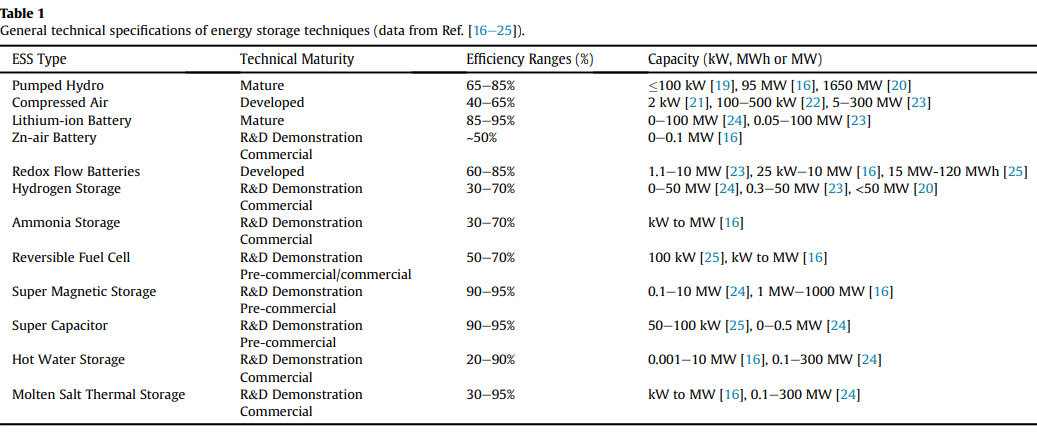Environment & Energy
Related: About this forumFire at the Vistra battery plant in Moss Landing prompts evacuation orders.
"We do have an active fire, burning through the building. Essentially what we are doing is backing out of the facility," North Monterey County Fire Chief Joel Mendoza told the Weekly at about 6:30pm.
People in two areas just east of Highway 1 in Moss Landing behind the Moss Landing power plant were advised to shut their windows and doors and shut off air systems until further notice, as advised by Monterey County officials just after 5pm on Thursday, Jan. 16.
-- more --
https://www.montereycountynow.com/blogs/news_blog/updated-fire-at-the-moss-landing-power-plant-prompts-evacuation-orders/article_58f70a34-d46f-11ef-918c-4380a2b17500.html
This is an environmental disaster. The power plant is adjacent to a protected wetland. The toxins released by this inferno will linger for a long time.
These huge battery systems play an essential role in the economic viability of California's hybrid gas-wind-solar energy electric power infrastructure.
CoopersDad
(3,274 posts)I didn’t even realize that they were also running dual combined cycle gas plants on the same site as what was the state’s largest power plant when it opened. 750 MW over three systems plus a smaller PG&E battery plant share the site. PG&E uses Tesla and Vistra uses LG.
I wonder if it was the indoor battery facility that went up or one of the outdoor units.
What a shame, this won’t improve the chances for another project planned for Morro Bay.
hunter
(40,325 posts)These projects will only prolong our dependence on natural gas, doing nothing in the long run to reduce the total amount of greenhouse gasses our civilization dumps into the atmosphere.
Mostly they serve as greenwash for the filthy natural gas industry.
CoopersDad
(3,274 posts)I've been a proponent of pumped hydro, flywheel, and battery storage technologies for a very long time.
Help me understand your point of view.
TIA
NNadir
(37,196 posts)...how energy is stored, the act of storing it wastes it. If the stored energy comes from fossil fuels - and let's stop lying to ourselves, roughly 80% of the world energy supply comes from this source - it means that one must burn more fossil fuels than one would do without storing energy. Energy that is put to use, which is always less energy than released in the use of a primary energy source, is called "exergy." Storing energy makes less energy available for use, and thus it destroys exergy.
There's a nice paper covering the whole topic here, giving the thermodynamic efficiency of various forms of energy storage, twelve of them, in fact: Manal AlShafi, Yusuf Bicer, Thermodynamic performance comparison of various energy storage systems from source-to-electricity for renewable energy resources, Energy, Volume 219, 2021, 119626.
The paper refers to the useless concept of so called "renewable energy" in the title, but applies to all forms of energy. The purpose of the useless so called "renewable energy" scheme is to convince a gullible public that energy storage is a good idea, and thus create an increased market for dangerous fossil fuels. The Moss Landing Plant is a dangerous natural gas plant, not a magical so called "renewable energy" plant. When the electricity generated in the plant is used to charge batteries, energy is wasted. Were it applied to the grid directly, without storage, more electricity would be available to provide exergy. Thus to charge the batteries, more natural gas is burned than would otherwise be burned.
Before the energy storage scam became popular because people believed that so called "renewable energy" was both significant and sustainable - it is neither - reliability was managed by running a few extra power plants than needed for immediate demand, to address demand surges. This was called "spinning reserve."
The forms of energy storage described in the paper, which looks pretty damned comprehensive to me, even if it doesn't cover flywheels, where the energy losses are frictional, both mechanical and air based, are shown in the following graphic:

There's a nice table of the ranges of energy losses via storage:

Ranges are given because a thermodynamic system depends sensitively on design, and more importantly, operating conditions, the most important of which is temperature.
Each storage system discussed in the paper has a nice schematic graphic associated with it. Here's the one for the most contemptibly marketed form of energy storage to my mind, one that is almost exclusively dependent on the waste of fossil fuels, hydrogen:

In the graphic, "heat out" represents destroyed exergy.
Here's some text describing the energy losses when the hydrogen is stored and when it is used; there are additional energy losses when hydrogen is produced, which are not discussed here:
The hydrogen storage system includes a hydrogen storage tank, hydrogen fuel cell, cooler unit, and compressor. The primary input of this system is chemical energy. The main flows of the system are hydrogen and air, with two main outputs, as shown in Fig. 7. The chemical energy is stored in the hydrogen storage, and it leaves as gaseous hydrogen, entering the hydrogen fuel cell. As the air leaves the compressor, it enters the cooler unit to decrease the air temperature, and it enters the hydrogen fuel cell. The reaction of both air and gaseous hydrogen in the fuel cell produces the electrical output along with nitrogen and water.
The hydrogen storage system state point properties are shown in Table 10, and the following assumptions are considered for calculations:
•
The mass flow rate is calculated by considering 98 kg stored in the hydrogen storage tank (24 h operation considered)
•
The hydrogen fuel cell has a 30% heat loss.
•
The isentropic efficiency of the compressor is 85%
•
7.5% mass loss is assumed for hydrogen storage tank
I hope this helps explain why the popular fantasies about energy storage are pernicious in the extreme.
Enjoy the rest of the weekend as best as you can under the circumstances.
hunter
(40,325 posts)They are not being used to store solar and wind energy for use when the sun isn't shining and the wind isn't blowing. Instead they are being used like the spring / shock-absorber suspension in a car, to keep the tires engaged with the road.
A common street bicycle doesn't need a sophisticated suspension system to travel on a smooth road. The springiness of the air inside its tires and the resistance of the rubber is generally enough to keep the tire tread in constant contact with the pavement.
Much more sophisticated suspension systems are required on both cars and mountain bikes to handle bumpy paths and roads. Without some kind of suspension system the tires spend a significant amount of time detached from the road as the vehicle bounces up and down, and control of the system is lost. This causes crashes.
On a large regional electric grid the demand for electricity changes gradually throughout the day in predictable ways. The road is smooth. If you add large amounts of wind or solar power to the mix it makes the road bumpy and some kind of "suspension system" is required to keep all the immediate power resources fully engaged with the grid.
These kinds of suspension systems waste energy. A sophisticated 15 speed touring bicycle with narrow tires and no other suspension system takes less energy to pedal down a smooth bike path than a mountain bike with fat tires and a heavy suspension system.
The amount of batteries it would take to actually create a 99% reliable "renewable energy only" electric grid is entirely ludicrous.
A wealthy person might buy an "off grid" solar system for their home but that does not make them independent of the high energy world economy that supports them. Worse, these expensive resource-intensive systems are not scalable to all eight billion humans currently living on this planet.
In the long run all these large scale solar, wind, and battery projects are an empty gesture that will not save the world. Promoting these projects is just a light-as-in-beer form of climate change denial.
